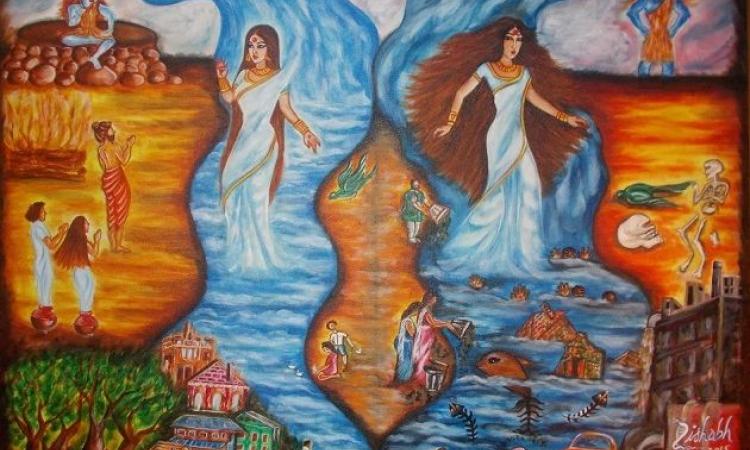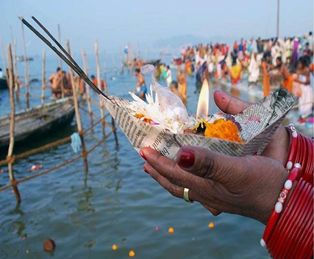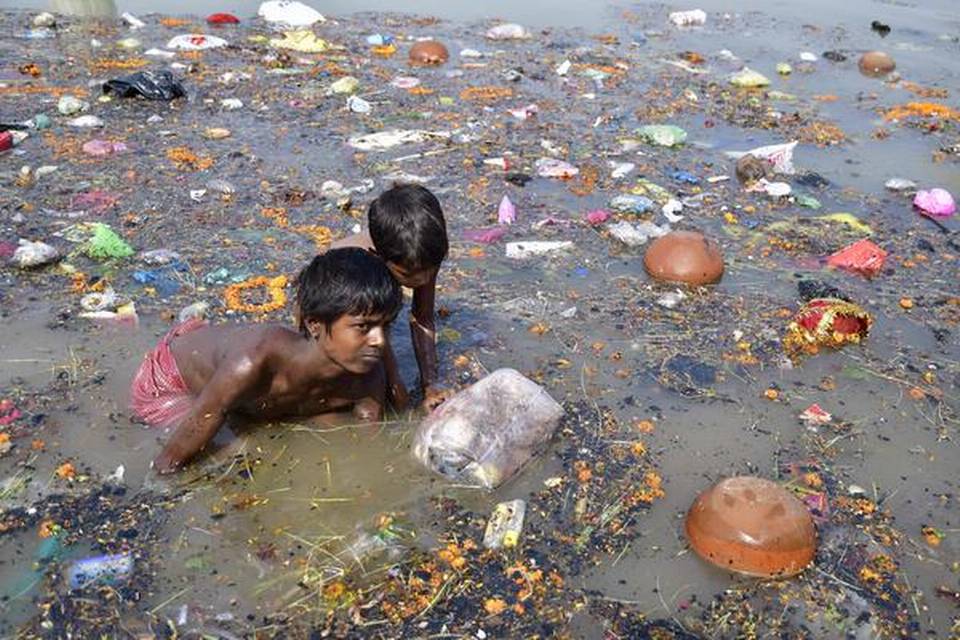
Climate change affects societies mainly through water – its availability, quality and quantity. Water pollution adds fuel to the fire to the effect of climate change and needs to be addressed immediately. Optimal use of water and improving the quality of available water are the need of the hour. As per a recent study by researchers in Cardiff University's Water Research Institute and the University of Vermont, improving the quality of water is a stronger tool to mitigate the effects of climate change. This significant linkage was echoed in World Water Day on March 22 which was celebrated on the theme of Water and Climate Change this year.
This increasing impact of water pollution and climate change on human life, affecting our fundamental need and right to clean drinking water and sanitation immediately takes us to the long due clean Ganga project. While searching for the reason of hardly any outcome achieved against reducing water pollution despite years of efforts, policies and large sums of funding allotted to clean Ganga plan, the lack of participatory work in the field becomes evident.
However, participatory work from the bottom level cannot be secured in clean Ganga projects without engaging with the cultural and religious ties between the river and the people. On that thought, this article highlights one factor of pollution in Ganga – caused by religious practices and rituals.
 In India, the climate action and climate justice movement is still in its initial stages, trying to educate people and secure active public participation. Culture can be an effective tool to induce an eco-centric approach to sustainability through narratives that give preference to engagement and action from people on the ground. More specifically, the retention of purity and health of river Ganga can be stressed using cultural terms (images that can be used in posters and pamphlets) to secure public action.
In India, the climate action and climate justice movement is still in its initial stages, trying to educate people and secure active public participation. Culture can be an effective tool to induce an eco-centric approach to sustainability through narratives that give preference to engagement and action from people on the ground. More specifically, the retention of purity and health of river Ganga can be stressed using cultural terms (images that can be used in posters and pamphlets) to secure public action.
Theory of climate justice
Taking cue from Amartya Sen and his theory of justice, the aim of climate action should be to create just societies – and includes institutions and behaviour (nyaya) rather than just the former. The role of people is central in the climate change arena – as the perpetrator, the victim, the one who should act and the one who should adapt to climate change.
Key elements
- This theory identifies the variances in capabilities of people to adapt to climate change. It acknowledges that the most vulnerable people have the least means and agency to deal with the depravations of primary goods. A climate just society is imagined to expose these vulnerabilities and considers the issue of hunger, starvation or similar depravations at the same level as violations of individual liberty.
- The second element of this theory advocates for exposing these variances and vulnerabilities to attain social recognition of voices of all. Social realizations are given more significance over the demands for transcendental institutions and rules.
- Public participation is the next aspect of the theory. As climate change is an issue affecting all, justice would be to ensure participation of all. Through this, the plurality of reasons would be featured in public, discussed and accommodated thereby leaving room for meaningful articulation and reasoning. This renders an opportunity to study the actual behaviour and needs of the people on the ground rather than ideal or reasonable behaviour and would aid in formulation of practical climate action.
- Suitable institutions and policies are preferred over ideal institutions.An effective public participation leads to choosing institutions and policies that are in congruence with the nature of the particular society, instead of merely relying on technical solutions. In other words, these institutions and policies will be co-dependent on the actual behaviour patterns that can be expected from and by all stakeholders involved in the issue.
Recommendations
To start with, there is an urgent need to converse with the beneficiaries and targets. A guiding method that would go well with the theory of climate justice proposed in the project would be the Sell the sizzler approach proposed by Elmer Wheeler. The vision of the plan in this approach is identical to the theory as it calls for clarity, is local and is about people. The idea is to let people understand the impact of the pollution on the vulnerable people and on climate and nature so that they can make an informed choice between heaven and hell.

The next step is to frame a to-do list. This could be –
- Converse: Organize a conversation with the victims of pollution to understand their vulnerabilities and demands. The meeting should be in the presence of the cultural heads who decide on the modes and requirements of the rituals. The beneficiaries and target perspectives should be heard.
- Articulate: Based on the conversation, articulate the behaviour of the people along with their demands. This would help in identifying at least one action that can be expected from the side of the targets. Simultaneously, identify the most significant need of the victims and figure out a measure that would aid them to adapt to this issue.
- Communicate: Effective communication with the pilgrims through pamphlets, posters and chats would be the next step. The narratives should be accommodative of their cultural and religious beliefs. The aim is to manipulate them to adopt at least one measure towards the issue at hand. In the end, they should be left to make their choice.
The images in the article can be used in pamphlets and posters to depict the idea of using culture as a tool to base the narratives to push the agenda of climate action. Culture and culture-based climate heaven are used to influence the consequence centered reasoning of the targets which would induce a sense of responsibility in them. This promotes the idea of distributional equity as the pilgrims who cause the pollution are directed to do certain things that would help in mitigation of the consequences and aid the adaptation of the beneficiaries.
Also, the pamphlets and narratives may be promoted by the people who are currently engaged in small scale businesses related to these practices if appointed by government as the guides to the pilgrims. They could explain to the visitors, the story and holiness of Ganga, thereby indirectly setting stage for action. Then they can enunciate the rights of Ganga attributed by the government.
Furthermore, all the funds collected from the pilgrims can be utilised to buy filters or build toilets for the beneficiaries. The meeting at the ground-level should include identification of the demands of the vulnerable people and accordingly utilise the amount. The aim should be to physically map the vulnerabilities and understand who needs what the most. Focus of these measures should be to rebuild the capabilities.
Aswathy S is an LLM student at Azim Premji University and is currently working on a project that links climate justice and pollution in Ganga.
Disclaimer: The views and opinions expressed in this article are those of the author/s and do not necessarily reflect the policy or position of India Water Portal.